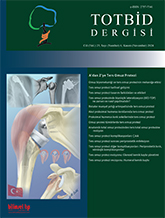
In the Grammont-type reverse shoulder prosthesis, medialization of the center of rotation tends to cause mechanical impingement between the humeral polyethylene insert and the scapular neck. This condition can result in complications such as limited range of motion, scapular notching, and prosthetic instability. To prevent or minimize these issues, lateralization of the prosthetic center of rotation has been proposed. Lateralization can be achieved either through the use of metal or biologically. In biological lateralization, a bone graft is placed on the glenoid surface to achieve glenoid lateralization. This surgical procedure, known as bony increased offset reversed shoulder arthroplasty (BIO-RSA), effectively lengthens the scapular neck, and once the bone graft has healed, maintains the center of rotation at the interface between the glenoid component and the scapula, thereby providing lateralization. The BIO-RSA technique is a successful method with the potential to improve functional outcomes by achieving biological lateralization of the shoulder joint. The main advantages of biological lateralization include the absence of donor site morbidity, no risk of disease transmission, and relatively low cost. The patient serves as their own donor, with the graft located at the surgical site. Preoperative planning plays a critical role in accurately assessing glenoid erosion and positioning the inclination of the baseplate. With angled BIO-RSA, glenoid deficiencies, including multiplanar deformities, can be predictably corrected. BIO-RSA minimizes complications such as limited range of motion, scapular notching, and prosthetic instability.